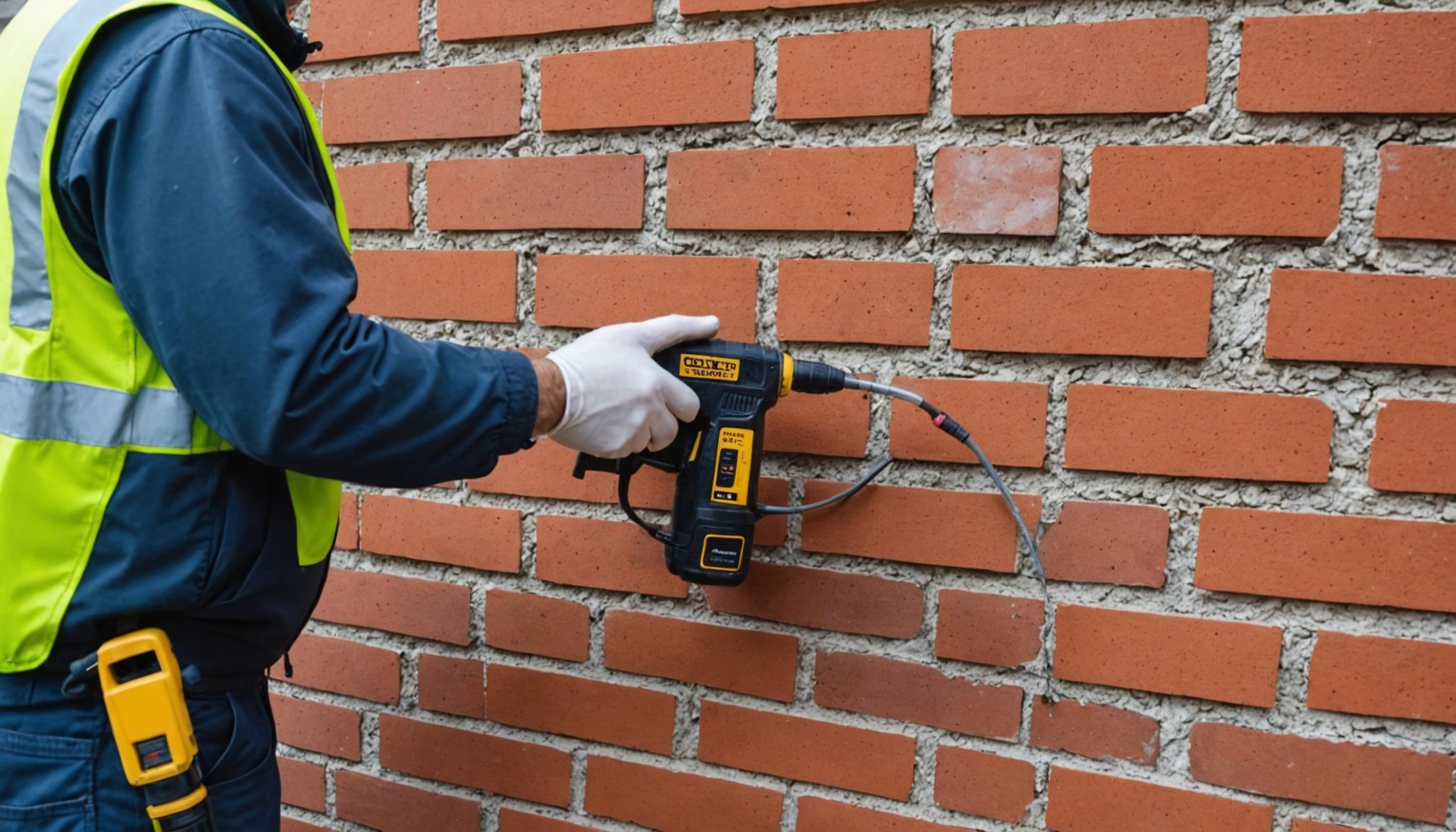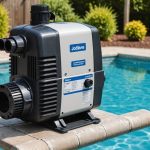Types of Cavity Wall Insulation Materials
When considering cavity wall insulation materials, it’s key to understand the various options available: mineral wool, foam, and polystyrene. These materials vary not just in composition, but in their effectiveness, durability, and cost. Mineral wool is known for its fire resistance and soundproofing qualities, making it a preferred choice for many UK homes seeking robust insulation options. However, it can be more costly than other materials.
On the other hand, foam insulation offers excellent thermal resistance, ensuring energy efficiency is maintained. It tends to be more expensive upfront, but its long-term energy savings often justify the price. Polystyrene beads, while more affordable, provide a decent level of insulation but may not be as long-lasting as alternatives.
Also read : Ultimate guide to successfully retrofitting your uk home with a heat pump: key tips and tricks
Comparatively, the environmental impact of these insulation materials is an important consideration. Foam insulation can have higher emissions during production, whereas mineral wool generally offers a more sustainable solution. Assessing energy efficiency against the environmental benefits is crucial in making an informed decision. Homeowners in the UK should weigh these factors carefully to select the insulation type that best meets their needs for energy efficiency and sustainability.
Understanding Cavity Wall Insulation
Cavity wall insulation plays a crucial role in enhancing the energy efficiency of UK homes. Primarily, its purpose is to reduce heat loss through the walls, helping homeowners maintain a consistent indoor temperature. This not only keeps winter chills at bay but also combats the summer heat. By optimising the thermal envelope of the house, the need for excessive heating or cooling is minimised, leading to significant energy savings over time.
This might interest you : Ultimate tips for successfully installing a solar water heating system in your uk home: best practices unveiled
For UK homeowners, the benefits extend beyond energy efficiency. Insulating cavity walls effectively can lead to reduced energy bills, improved home comfort, and increased property value. Additionally, it contributes positively to environmental efforts by lowering the household’s carbon footprint.
Despite these advantages, there are common misconceptions about cavity wall insulation. Some believe it causes dampness, though this usually results from incorrect installation rather than the material itself. Another myth suggests that insulation is unnecessary in warmer climates; however, even in the UK, it is vital for controlling indoor climates year-round. Clarifying these points helps homeowners make informed decisions about their cavity wall insulation needs, ensuring they fully utilise its myriad benefits.
Step-by-Step Guide to Installing Cavity Wall Insulation
Installing cavity wall insulation can enhance the energy efficiency of UK homes significantly. Whether you’re thinking of a DIY approach or opting for professional help, understanding the process is vital.
Preparation Steps and Tools
Before beginning, ensure that the wall is suitable and free from structural issues. Essential tools include an electric drill, insulation blowing machine, protective eyewear, and a dust mask. Being prepared is crucial even if you choose professional installation, as knowing what’s involved helps oversee the process.
Step-by-Step DIY Installation
- Assessment: Confirm that the cavity walls are free from obstructions like wires or debris.
- Drilling: Drill small holes into the mortar joints of the exterior walls.
- Insulation Blowing: Use a blowing machine to fill the cavity thoroughly with the selected insulation material.
- Seal and Finish: Once insulation is complete, seal the holes neatly with mortar.
Hiring a Professional
Opt for professional installation if DIY seems daunting or if your home has complex structures. Professionals bring expertise and equipment, ensuring compliance with safety standards. Always vet your contractor’s qualifications and request multiple quotes for the best outcome.
Cost Analysis of Cavity Wall Insulation
Understanding the costs of cavity wall insulation is crucial for effective budget planning. The initial costs can vary significantly depending on factors such as home size, chosen insulation material, and installation method. For instance, mineral wool might have a higher upfront price compared to polystyrene, but its durability and fire resistance could justify the expense over time.
Long-term financial benefits often outweigh these initial expenses. Homeowners in the UK may notice reductions in energy bills, as well-insulated homes require less heating and cooling, leading to substantial savings. Evaluating this cost-benefit is essential for any homeowner considering insulation.
Moreover, several government grants and incentives can ease the financial burden of installing cavity wall insulation. These programs aim to promote energy efficiency and reduce carbon emissions in UK homes. Homeowners should investigate such options, possibly qualifying for aid to offset some of the insulation costs.
Considering these aspects can provide a clearer picture of the financial implications of cavity wall insulation and help homeowners make informed investment decisions regarding their property’s energy efficiency.
Environmental and Energy Efficiency Impact
Understanding the energy efficiency and environmental impact of cavity wall insulation is crucial for UK homeowners. Installing cavity wall insulation significantly reduces your home’s heat loss, promoting energy conservation and lowering energy bills. As a result, it’s not only beneficial for your wallet but also for the environment.
By enhancing your home’s thermal envelope, this insulation reduces reliance on heating and cooling systems, thereby decreasing your carbon footprint. This reduction contributes positively to wider climate change efforts. For instance, by lessening fossil fuel use, cavity wall insulation indirectly helps in reducing greenhouse gas emissions.
Additionally, several relevant UK regulations promote the use of energy-efficient technologies like cavity wall insulation. Initiatives such as the UK’s Energy Performance Certificate (EPC) increase awareness and encourage sustainable energy practices among homeowners.
These regulations are part of a broader governmental strategy to improve energy efficiency across the UK. They reflect a national commitment to eco-friendly practices, aiming for a significant reduction in domestic energy consumption and carbon emissions by 2030. This focus underscores the importance of insulation not just as a cost-saving measure but as a vital component of sustainable living.
Hiring a Contractor for Cavity Wall Insulation
Choosing the right contractor for your cavity wall insulation project in UK homes is crucial for ensuring quality and energy efficiency. Before hiring, it’s essential to ask potential contractors pertinent questions about their experience and expertise. For instance, “Are you experienced with cavity wall insulation in UK homes?” can immediately clarify their suitability.
Checking a contractor’s qualifications and certifications is a prudent step. Ask if they are registered with recognized bodies like the British Board of Agrément. Such credentials can assure you of their capability to deliver effective and compliant insulation services.
Requesting multiple quotes is advantageous. By comparing different professional insulation services, homeowners can identify the best value for money. This practice also enables better negotiation on prices and services offered. Ensure that all quotes cover the same scope of work to make a fair comparison easier.
Additionally, reading customer reviews and testimonials can provide insight into past performance and reliability. Don’t hesitate to ask for references or case studies from previous projects. Taking these steps ensures that your investment in cavity wall insulation yields benefits in energy efficiency and home comfort.
Potential Pitfalls and Maintenance of Cavity Wall Insulation
Proper maintenance and awareness of potential pitfalls are crucial for the longevity of cavity wall insulation. One common mistake during installation is inadequate inspection of existing walls for moisture issues or damage. Proper preparation is key to prevent potential problems later.
Maintenance plays a critical role in ensuring your insulation remains effective. Regularly check for signs of deterioration, such as cold spots on walls or increased energy bills. These can indicate insulation failure and should be addressed promptly to maintain energy efficiency.
It’s important to avoid excessive drilling or structural modifications in insulated walls, as they may compromise the insulation’s integrity. If modifications are necessary, consult with professionals to ensure the insulation remains effective.
Additionally, be wary of misconceptions about cavity wall insulation. Some believe it inherently causes damp issues; usually, this arises from poor installation rather than the material. Also, some homeowners neglect regular maintenance due to incorrect assumptions about the durability of insulation materials.
By addressing these common issues and misconceptions, UK homeowners can optimise their cavity wall insulation, ensuring lasting comfort and energy efficiency in their homes. Regular inspections and thoughtful installation practices significantly contribute to these outcomes.
Resources and Further Reading
To deepen your understanding of cavity wall insulation and its implementation in UK homes, tapping into credible resources can be invaluable. Various UK-focused governmental websites offer comprehensive guides and updates on energy efficiency regulations. They provide detail on cavity wall insulation materials and the latest insulation types aligning with environmental standards.
Books and articles focusing on sustainable housing development often highlight the importance of choosing the right insulation. They explore material comparisons, detailing each option’s pros and cons while reflecting on the broader impact on energy efficiency.
Local organisations frequently conduct workshops and seminars, giving homeowners practical insights into installation and maintenance. These events often cover both DIY processes and professional insulation services, offering hands-on advice to navigate potential pitfalls.
For those eager for further advice, consulting expert-led forums online can be beneficial. These platforms allow homeowners to share experiences and solutions regarding cavity wall insulation. Such exchanges can aid in understanding common issues and troubleshooting effectively.
In-depth resources equip homeowners with the knowledge to optimise their insulation choices, ensuring both comfort and energy effectiveness in their homes.





